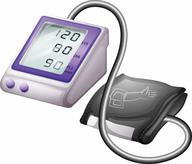ThisisPatientEngagementcontent
Preventing Hypertension
Learn more about our Patient Engagement products now! Turn your patients into active participants in their healthcare by giving them easy access to the same evidence-based information you trust – but delivered in an easy-to-understand format.
High blood pressure after pregnancy, or postpartum hypertension, is blood pressure that is higher than normal after childbirth. It's most common within 1 to 2 days after delivery, but it can happen later. Sometimes, it can happen up to 12 weeks or more after pregnancy.
Some people have to have medical treatment to control high blood pressure and prevent serious complications.
If you had blood pressure problems during pregnancy, you're more likely to get this condition after giving birth. However, you can still have high blood pressure after delivery even if you didn't have problems during pregnancy.
You may not have any signs or symptoms.
This condition may be diagnosed based on the results of a physical exam, blood pressure measurements, and blood and pee (urine) tests.
You may also have other tests, such as a CT scan or an MRI, to check for other problems.
Your health care provider will also continue to closely watch your blood pressure.
Learn your goal blood pressure
Two numbers make up your blood pressure. The first number is called systolic pressure. The second is called diastolic pressure. An example of a blood pressure reading is "120 over 80" (or 120/80). Ask your health care provider what your goal blood pressure is.
Know how to take your blood pressure
To check your blood pressure, follow the instructions in the manual that came with your blood pressure monitor. This includes any instructions on what to do before taking your blood pressure.
Record your blood pressure readings
 Follow your health care provider's instructions on how to record your blood pressure readings. Your health care provider may ask you to:
Follow your health care provider's instructions on how to record your blood pressure readings. Your health care provider may ask you to:General instructions
This information is not intended to replace advice given to you by your health care provider. Make sure you discuss any questions you have with your health care provider.
Cookies are used by this site. To decline or learn more, visit our cookie notice.
Copyright © 2025 Elsevier, its licensors, and contributors. All rights are reserved, including those for text and data mining, AI training, and similar technologies.